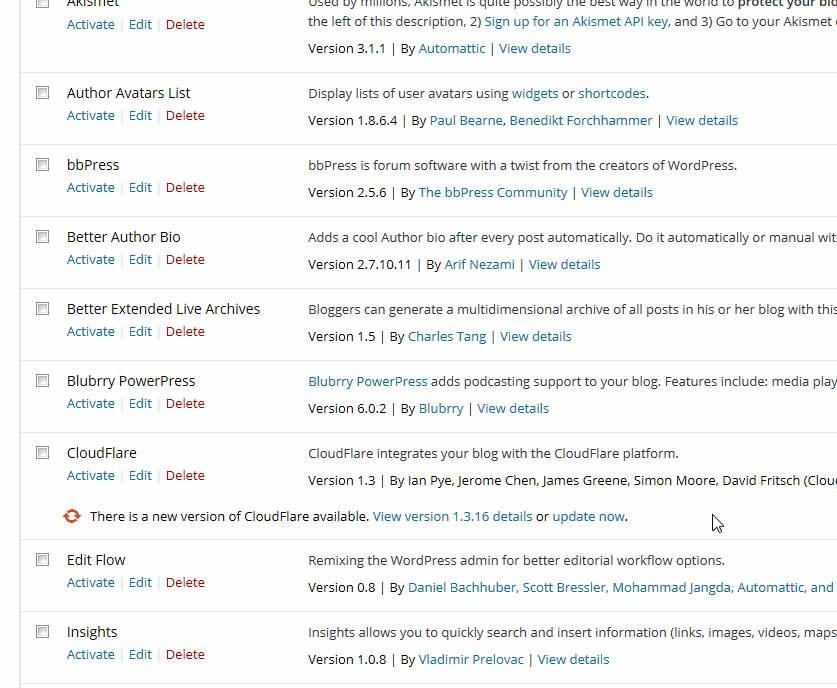A few days ago, we highlighted how WordPress 4.2 radically improves the installation and update process for plugins. Several readers commented on the article expressing that automatically activating plugins after installation is a bad idea. A decision was made during the March 25th, WordPress core developer chat to remove enhanced plugin installs from WordPress 4.2 and punt it to a future release. However, enhanced plugin updates will remain in WordPress 4.2.

It’s uncommon for functionality to be removed from WordPress this late in the development cycle. Drew Jaynes, who is leading the 4.2 release cycle, explains that the feature just isn’t ready.
Prudence demands that we decide whether to do things now vs do things right. In this case, we want to make sure we handle the user experience of activating plugins after installation the right way for most use cases. So we still have ‘Shiny Updates’, but we’re going to have to fall back and regroup on ‘Shiny Installs’.
On the Make WordPress core blog, Aaron Jorbin outlined three issues caused by auto activating plugins.
- Plugins that require after activation steps (such as connecting to Jetpack or Google Analytics, updating permalinks for BuddyPress, etc) aren’t obvious. We need a way for plugins to provide a notice upon activation that shows what to do next.
- Since the menu isn’t updated, users still need to do a page refresh in order for the changes to actually go in effect and for them to use the features of many plugins.
- There are plugins such as maintenance mode ones that users will not want to be activated right away.
The idea of installing plugins inline is sound, but until the user experience issues are addressed, the plugin install process will remain the same.
“The idea of installing plugins inline is sound, but until the user experience issues are addressed, the plugin install process will remain the same.”
You are a man of power and a man of the people Jeff
Good to know that the WordPress devs do listen.